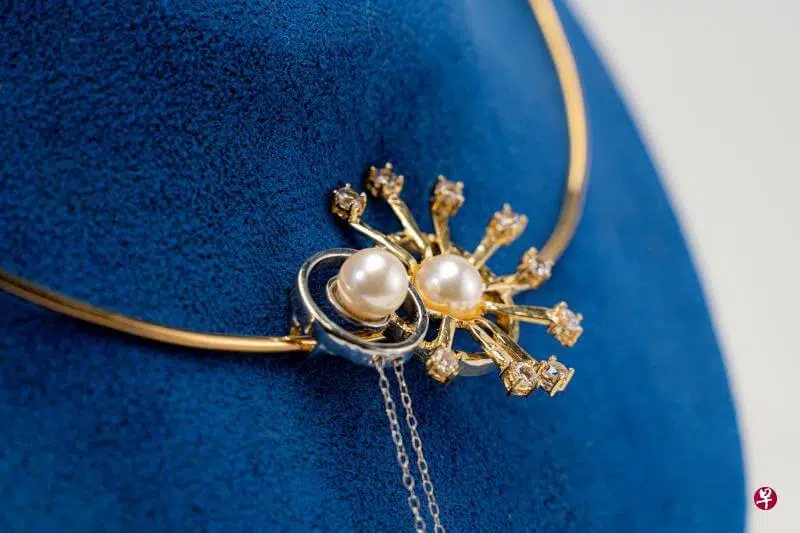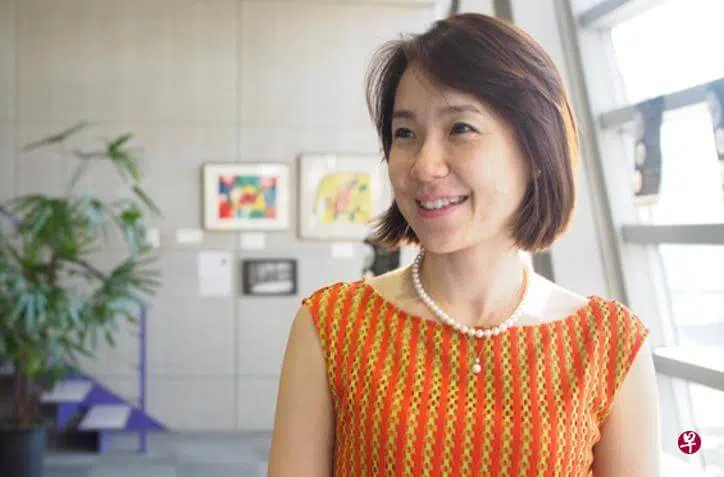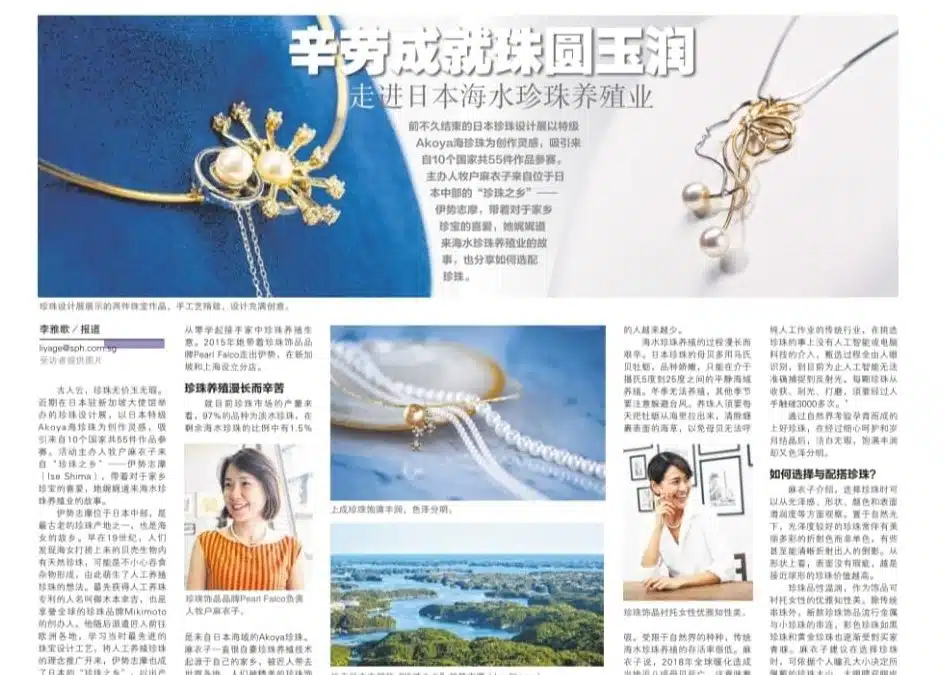

We are so honored to be featured in the flagship Chinese Daily Lianhe Zaobao (联合早报) in Singapore. We greatly appreciate the Singapore Press Holdings journalist for listening to our story and our challenges and composing a very detailed article. Yes, it has not been easy for Maiko, owner of Pearl Falco to take over a legacy family business from a traditional industry in the Japanese countryside. Still Maiko wishes to share the many stories of a people’s love and devotion behind each piece of Akoya pearl jewelry.
Original Article in Zaobao 15th January, 2020
The following is Pearl Fallco’s English Translation of the article
The Grand Prix of Akoya Pearl Jewellery 2020 Singapore, which ended recently, was organized by Co-Owner of Pearl Falco, Ms Maiko Makito. The design competition, held at the Japanese Embassy in Singapore, incorporating the use of Akoya Pearls, attracted a total of 55 design entries from 10 different countries. Maiko Makito is originally from Ise Shima, the “birthplace of cultured pearls” located in central Japan. With her love for the treasures of her hometown, Maiko shares the story of Japan’s saltwater pearl farming industry and explains how to choose pearls.
Ise Shima is located in central Japan and is one of the world’s oldest known locations for pearl farming, also popularly recognized as the hometown of “sea women” pearl divers. As early as the 19th century, people discovered natural pearls in shell creatures, which may have been formed by accidentally swallowing debris, which gave birth to the idea of the artificial cultivation of pearls. The first person to obtain a patent for cultured pearls was Mikimoto Kokichi, and he is also the founder of the world-renowned pearl brand Mikimoto. Mr Mikimoto then sent craftsmen to various parts of Europe to learn the most advanced jewelry design techniques at the time, and to promote the concept of artificially cultured pearls. To this day, Ise Shima is renowned as Japan’s “pearl town” and is famous for producing Akoya pearls.
As a native of Ise, Maiko Makito’s family runs a pearl business. Like all Japanese dramas, when the traditional industry declined and there were no successors, Maiko, an engineer in Singapore, was summoned by her father to return to her hometown to inherit the mantle and take over the pearl business at home from scratch. In 2015, she took the pearl jewelry brand Pearl Falco out of Ise and set up branches in Singapore and Shanghai.
Pearl Cultivation Requires Patience and Hard Work
In terms of the current output of the world’s pearl market, 97% of the varieties available are freshwater pearls, and 1.5% of the remaining saltwater pearls are Akoya pearls from the seas of Japan. Maiko has always been proud that the tradition of pearl cultivation originated in her hometown and was taken by craftsmen and shared all over the world. People are attracted by exquisite pearl jewelry, but are far less aware of the hard work of the pearl farmers. Maiko hopes to share the story behind the pearl with more people.
A pearl takes five to six years from conception to full maturity. The pearl cultivator must first raise the mother-shell oysters that are incubated with pearls. When the time is right, the nucleation operation is performed-after the adult oysters are anesthetized, the beads made from the shells are put into their stomachs and sutured. The mother shell activates a protective mechanism due to the insertion of a foreign body, and continuously produces secretions. When the secretion process is repeated, the secretion containing calcium carbonate and conchiolin wraps the nucleus layer by layer, and finally forms a pearl.
The opening and closing of the mother oyster is a delicate practice. Improperly done, and the quality of the pearl will be affected. Pearl farming reflects the spirit of Japanese craftsmanship and the patience of detailed work. Still as Japan’s population continues to decline, fewer and fewer people are engaged in traditional pearl cultivation.
Saltwater pearl cultivation is a long and difficult process. The mother of Japanese pearls is most commonly the oyster, which is delicate and can only be cultured in calm waters between 5°C and 25°C. It is not possible to breed in winter, and typhoons in other seasons must be avoided. The pearl cultivator needs to pull the oysters out of the sea every day to remove seaweed from the surface so that the mother oyster can breathe. Limited by the vagaries of nature, the survival rate of traditional saltwater pearls is low. Maiko said that in 2018, global warming caused nearly 80% of the local mother oysters to perish, which means that pearl production will be drastically reduced for the next four to five years. Maiko hopes to share the process of pearl cultivation to help everyone understand the impact of global warming and ocean pollution on our world’s oceans.
Each Finished Cultured Pearl Is Touched No Less Than 3000 Times
Maiko said: “Pearl farming is a traditional industry that is purely manual. There is no artificial intelligence or computer technology involved in the selection of pearls. The selection process is all done by a skilled pair of eyes. So far, artificial intelligence cannot accurately capture the reflected light. Each fully cultured and finished pearl is touched no less than 3,000 times by hand from harvesting, cutting, and polishing.” The finest pearls are born in nature, after careful care and crystallization over several years.They are white flawless and perfectly round, yet distinct in color.
How To Choose And Match Pearls?
Maiko explained that when choosing pearls, one can observe the luster, shape, color and surface smoothness. Under natural light, pearls with better luster are often more be intrinsically beautiful and colorful with refractive colors versus monochromatic colors. Some pearls are lustrous enough to bear our own reflection. As for shape, the closer to a flawless perfect sphere is achieved, the higher the value of the pearl.
Cultured pearls are warm and have an interior glow. Pearls are said to set off women’s elegant intellectual beauty. In addition to traditional beading, contemporary pearl jewelry is popular with metal and smaller pearls. Colored pearls such as black and gold pearls are gradually gaining popularity among buyers. Maiko suggests that when choosing pearls, the size of the pearls worn can be determined according to the size of the individual’s pupils. Women with larger eyes and double eyelids may find larger pearls more suitable, while women with smaller pupils may find smaller pearls more appropriate so as to avoid mistakenly magnifying the visual focus.
Care should be taken to keep one’s pearls from being contaminated with chemicals such as perfume and skin care products. After each use, gently wipe and clean the surface of the pearls before putting it them back in your jewelry box.

